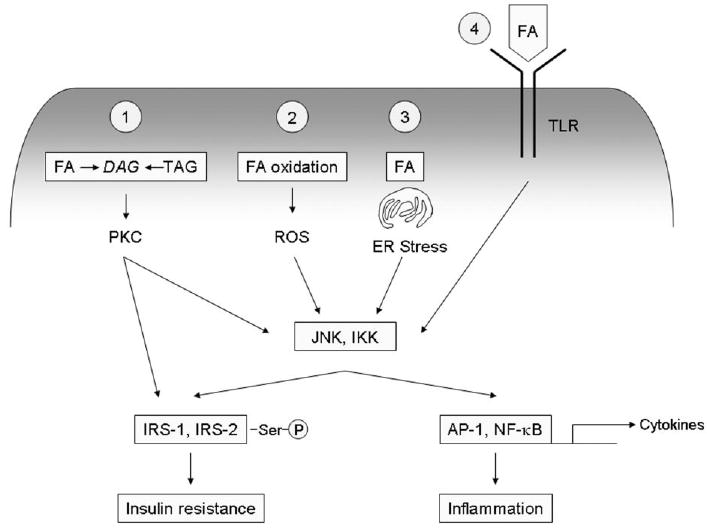Fig. 1.

Activation of inflammatory signaling pathways by fat. Excess fat or fatty acids (FA) can activate a number of intracellular signaling pathways that lead to inflammation through IKK and JNK IKK and JNK cause inflammation by promoting formation of the transcription factors AP-1 and NF-κB, which activate transcription of a host of proinflammatory genes including cytokines, chemokines, and cell adhesion molecules. PKC, IKK and JNK can also cause insulin resistance by promoting aberrant serine phosphorylation of IRS-1 and IRS-2. (1) The lipid intermediate diacylglycerol (DAG), formed during the synthesis or hydrolysis of triacylglycerol (TAG), can activate PKC, which causes downstream activation of IKK and JNK. (2) Fatty acid oxidation yields reactive oxygen species (ROS), which can directly activate IKK and JNK. (3) Excess fat can promote ER stress, which activates IKK and JNK through the intermediate kinases IRE-1 and PERK. (4) Extracellular fatty acids can act as ligands for TLR, which signal through IKK and JNK.
